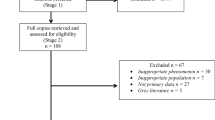Abstract
The purpose of this study is to describe the factors that are critical to successful school integration of high-functioning children with autism. The report presents a qualitative description of the experience of parents and teachers with individual integration of high-functioning children with autism. Eight sets of parents, key teachers, and several of the children were interviewed using a semi-structured questionnaire. The foundation of the qualitative analysis is the perceptions of the interviewees, as gleaned from transcripts of the tape recordings. The results have been organized around some central themes: the academic and social progress in the course of schooling; the resources and methods used in connection with the integration; and the dilemmas and costs involved in the integration. Finally, some key-factors for successful integration are drawn from the material.
Résumé
Le but de cette étude est de décrire les facteurs qui ont un rôle critique dans le succès de l’intégration scolaire d’enfants autistes avev un bon fonctionnement. L’article présente une description qualitative de l’expérience de parents d’enseignants avec intégration individuelle d’enfants autistes avec un bon fonctionnement. 8 couples de parents, de professeurs réferents, et plusieurs des enfants ont eu un entretien faisant appel à un questionnaire semistructuré. Le fondement de l’analyse qualitative est la perception des interviewers, telle qu’a été glanée de la retranscription des enregistrements des entretiens. Les résultats ont été organisés autour de quelques thèmes centraux: le progrès social et scolaire dans le cours de la scolarisation, les ressources et méthodes utilisées en relation avec l’intégration, et les dilemmes et les coûts de l’intégration. Finalement quelques facteurs clés pour le succès de l’intégration ont été tirés de ce matériel.
Zusammenfassung
Das Ziel dieser Studie ist die Beschreibung von Faktoren, die unabdingbar für eine erfolgreiche schulische Integration von nicht geistig behinderten Kindern mit Autismus sind. Der Bericht vermittelt eine qualitative Beschreibung der Erfahrungen von Eltern und Lehrern zur individuellen Integration dieser Kinder. Acht Elternpaare, Bezugslehrer und mehrere Kinder wurden mit einem semistrukturierten Fragebogen interviewt. Den Grundstein der qualitativen Analyse bilden die Wahrnehmung der interviewten Personen, die aus Aufzeichnungen der Tonbänder gewonnen wurden. Die Ergebnisse sind um einige zentrale Themen angeordnet worden: den akademischen und sozialen Fortschritt im Verlauf der Beschulung; die Ressourcen und Methoden, die in Verbindung mit der Integration genutzt wurden; und die Schwierigkeiten und Kosten der Integration. Abschließend wird auf einige Hauptfaktoren für die erfolgreiche Integration geschlossen.
Similar content being viewed by others
References
Asperger, H. (1991). “Autistic Psychopathy” in childhood (translated into English). In U. Frith (Ed.)Autism and Asperger Syndrome. Cambridge: University Press.
Bohman, M., Bohman, I.L. & Sjöholm-Lif. (1989). Steps towards the organization of services for autistic children and their families: The responsibility of child psychiatry. In C. Gillberg (Ed.)Diagnosis and Treatment of Autism. New York: Plenum Press.
Bowler, D.M. (1992). “Theory of Mind” in Asperger’s Syndrome.Journal of Child Psychology and Psychiatry, 33, 877–893.
Ehlers, S. & Gillberg, C. (1993). The epidemiology of Asperger Syndrome. A total population study.Journal of Child Psychology and Psychiatry, 34, 1327–1350.
Frith, U. (1991). Asperger and his syndrome. In U. Frith (Ed.)Autism and Asperger Syndrome. Cambridge: University Press.
Gillberg, C. (1989). Habilitation for children with autism: A Swedish example. In C. Gillberg (Ed.)Diagnosis and Treatment of Autism. New York: Plenum Press.
Gillberg, C., Steffenburg, S. & Schaumann, H. (1991). Is autism more common now than ten years ago?British Journal of Psychiatry, 158, 403–409.
Gillberg, C., Steffenburg, S. & Jakobsson, G. (1987). Neurobiological findings in 20 relatively gifted children with Kanner-type autism or Asperger’s Syndrome.Developmental Medicine and Child Neurology, 29, 641–649.
Gillberg, I.C. & Gillberg, C. (1989). Asperger Syndrome—some epidemiological considerations: A research note.Journal of Child Psychology and Psychiatry, 30, 631–638.
Happe, F. (1992).Communication and Theory of Mind. Speech at Autism Conference, Aarhus.
ICD-10. (1992).The ICD-10 Classification of Mental and Behavioural Disorders. Geneva: World Health Organization.
Kanner, L. (1943). Autistic disturbances of affective contact.Nervous Child, 2, 217–250.
Kvale, S. (1983). The Qualitative Research Interview.Journal of Phenomenological Psychology.14, 171–196.
Kvale, S. (1984). Om tolkning af kvalitative forsknings-interviews.Tidskrift för Nordisk Förening för Pedagogisk Forskning.3/4, 55–66.
Lord, C & Venter, A. (1992). Outcome and follow-up studies of high-functioning autistic individuals. In E. Schopler & G.B. Mesibov (Eds.)High-Functioning Individuals with Autism. New York: Plenum Press.
Ozonoff, S., Rogers, S.J. & Pennington, B.F. (1991). Asperger’s syndrome: Evidence of an empirical distinction from high-functioning autism.Journal of Child Psychology and Psychiatry, 32, 1107–1122.
Rumsey, J.M., Rapoport, J.L. & Sceery, W.R. (1985). Autistic children as adults. Psychiatric, social and behavioural outcomes.Journal of the American Academy of Child Psychiatry, 24, 465–473.
Rutter, M. (1978). Diagnosis and definition. In M. Rutter & E. Schopler (Eds.)Autism: A Reappraisal of Concepts and Treatment. New York: Plenum Press.
Rutter, M. (1985). Infantile autism and other pervasive developmental disorders. In M. Rutter & L. Hersov (Eds.)Child and Adolescent Psychiatry. Oxford: Blackwell.
Szatmari, P., Bartolucci, R., Bremmer, S. & Rich, S. (1989). A follow-up study of high-functioning autistic children.Journal of Autism and Developmental Disorders, 19, 213–225.
Trillingsgaard, A. (1988). Ikke-retarderede autistiske børn. In A. Trillingsgaard & G. Nemec (Eds.)Tilegnet Birte Høeg Brask—et Skrift om Psykotiske Børn. Risskov: Psykiatrisk Børnehospital.
Tsai, L.Y. (1992). Diagnostic issues in high-functioning autism. In E. Schopler & G.B. Mesibov (Eds.)High-Functioning Individuals with Autism. New York: Plenum Press.
Wing, L. (1981). Asperger’s Syndrome: A clinical account.Psychological Medicine, 11, 115–129.
Wing, L. (1991). The relationship between Asperger’s Syndrome and Kanner’s autism. In U. Frith (Ed.)Autism and Asperger Syndrome. Cambridge: University Press.
Author information
Authors and Affiliations
Rights and permissions
About this article
Cite this article
Trillingsgaard, A., Sørensen, E.U. School integration of high-functioning children with autism. A qualitative clinical interview study. European Child & Adolescent Psychiatry 3, 187–196 (1994). https://doi.org/10.1007/BF02720325
Issue Date:
DOI: https://doi.org/10.1007/BF02720325




